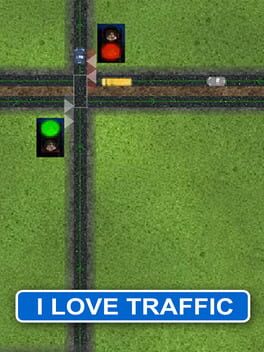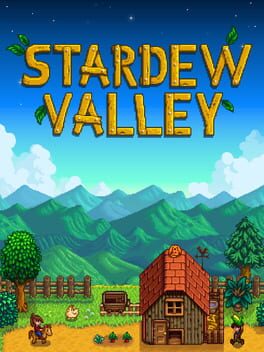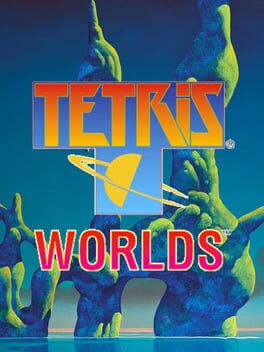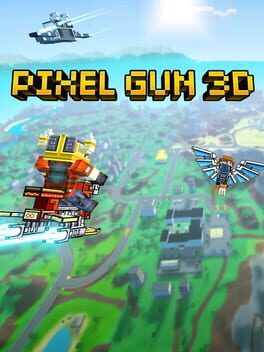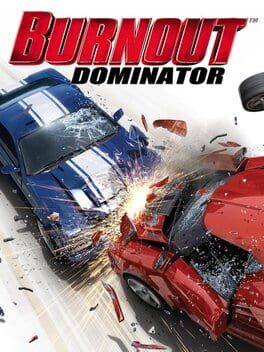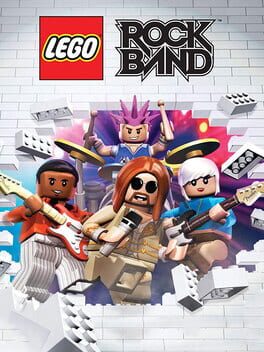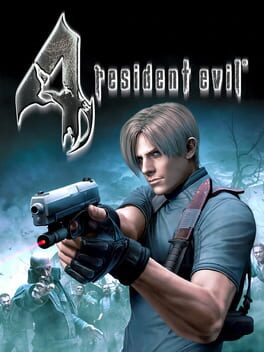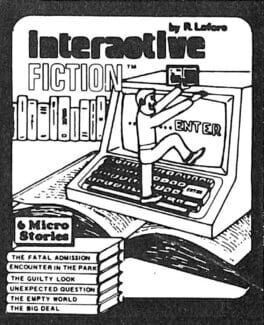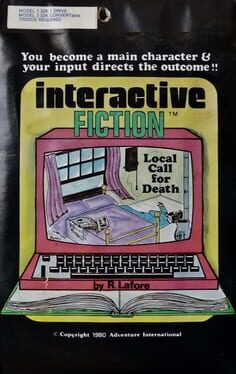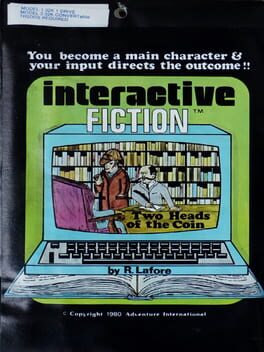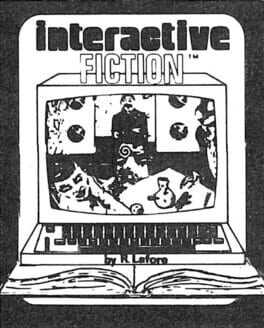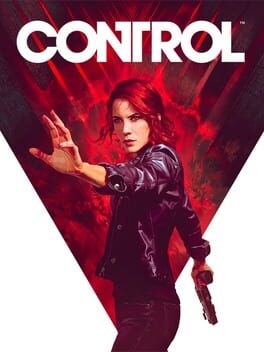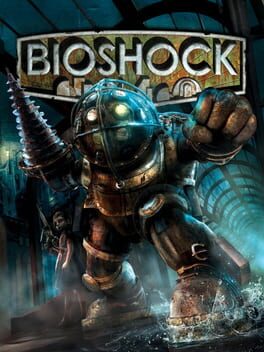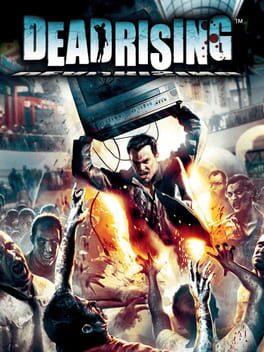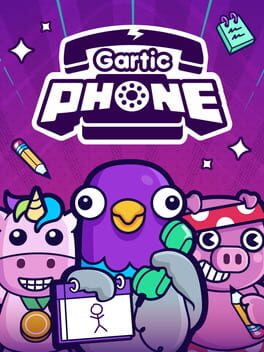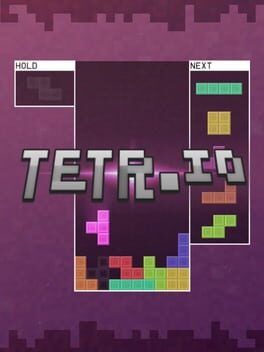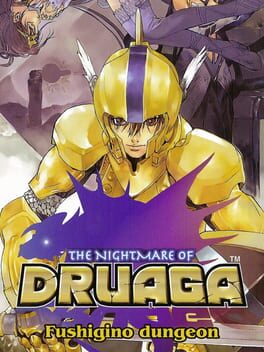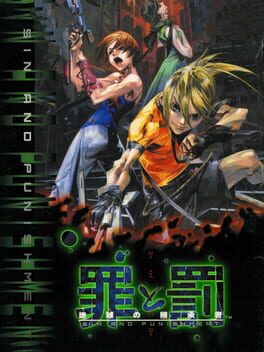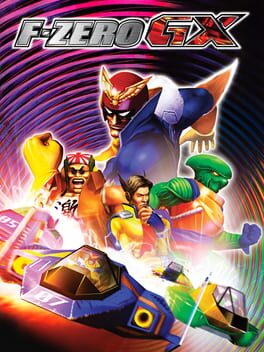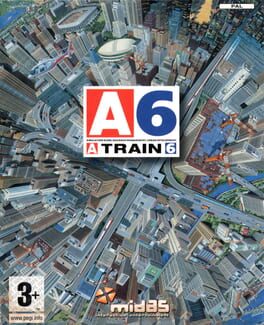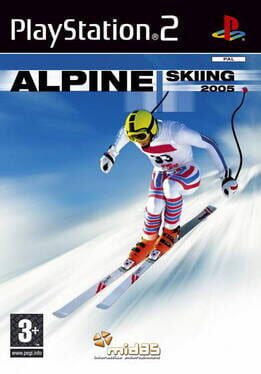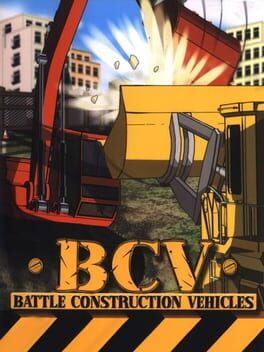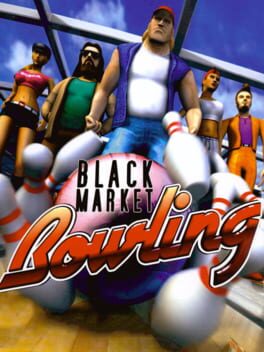82 reviews liked by inbox
Yakuza Online
2018
I Love Traffic
2009
Content Warning
2024
To preface, I feel a bit bad writing this review. I like articulating my thoughts on games but at the end of the day I played this with some friends (who, thank goodness, don't know about this account) and am subsequently compelled to talk shit about it, maybe as a warning to other prospective players, maybe just for talking's sake. Anyways!
I didn't really know anything about this game going in, but I downloaded it for free on April Fool's, an April Fool's which kind of passed me by in comparison to others. After that day - which I didn't know until the time of writing but was the release day of the game overall - the price was hiked up to 10 dollars. Even trying to apply Hanlon's razor I can't really see this as much besides a cynical carpet-pull, a spur-of-the-moment reaction to the unprecedented success of their April Fool's game; whether it was to fund the game servers or simply to make a killing I couldnt say, but the impression persists.
I hate to be surely the billionth person to make this comparison - no less to a game I haven't played - but this follows in Lethal Company's stride as a co-op horror game with proximity voice chat, about exploring grim environments, finding artifacts and surviving encounters with monsters. The main difference is the addition of an in-game camera, the motivation behind your escapades being to gain views in the game's universe, funding future exploits. This feature allows you to save the videos you record in the game to your computer which I really appreciate; any kind of game that generates media like this (drawings in skribbl.io or Gartic Phone, replays in Super Smash Bros., etc.) gets at least a few points for me.
Sadly my praise for the game ends there.
When the emphasis is so heavily put on the players to "be funny" for an invisible audience all the sense of exploration in the game pretty much immediately feel dry and manufactured, the slippery controls and emphasis on physical darkness further pushing this absolutely stilted horror aspect where (seemingly) random audio cues and random things coming at you from the darkness and killing you comprises the horror aspect of this game.
I'm not huge on the monsters themselves either; they come from the DOORS on Roblox camp of monsters that come at you from nowhere, that you stand no chance against until you find out their "quirk", usually from a scholarly friend as opposed to any in-game learning experience. Most monsters, after they've had their fun with you, either kill you outright or separate you from the group, severing you from the camera and thus the object of the game.
The camera being a physical object in the game world is a fun idea, the real camera shake and angles that this allows in replays is honestly nice, but at the same time I feel like it puts an unfair emphasis on one player as the anchor of the group, everyone else orbiting around them and hoping they aren't separated. Because once you are separated, there's pretty much nothing to do except try and retrace your steps, or sit around in the post-game chat doing literally nothing. Maybe something like randomly switching who owns the camera - perhaps upon detecting a splinter in the group - but where it stands it makes half the game for half the players, at least in my eyes, dreadfully boring.
All in all this, for me, was a free game. I'm glad I played it for the short time I did, but 5 in-game rounds was enough for me to grow tired of the game; which I suppose is OK for a free novelty game, but for a commercial product is another prospect entirely.
I didn't really know anything about this game going in, but I downloaded it for free on April Fool's, an April Fool's which kind of passed me by in comparison to others. After that day - which I didn't know until the time of writing but was the release day of the game overall - the price was hiked up to 10 dollars. Even trying to apply Hanlon's razor I can't really see this as much besides a cynical carpet-pull, a spur-of-the-moment reaction to the unprecedented success of their April Fool's game; whether it was to fund the game servers or simply to make a killing I couldnt say, but the impression persists.
I hate to be surely the billionth person to make this comparison - no less to a game I haven't played - but this follows in Lethal Company's stride as a co-op horror game with proximity voice chat, about exploring grim environments, finding artifacts and surviving encounters with monsters. The main difference is the addition of an in-game camera, the motivation behind your escapades being to gain views in the game's universe, funding future exploits. This feature allows you to save the videos you record in the game to your computer which I really appreciate; any kind of game that generates media like this (drawings in skribbl.io or Gartic Phone, replays in Super Smash Bros., etc.) gets at least a few points for me.
Sadly my praise for the game ends there.
When the emphasis is so heavily put on the players to "be funny" for an invisible audience all the sense of exploration in the game pretty much immediately feel dry and manufactured, the slippery controls and emphasis on physical darkness further pushing this absolutely stilted horror aspect where (seemingly) random audio cues and random things coming at you from the darkness and killing you comprises the horror aspect of this game.
I'm not huge on the monsters themselves either; they come from the DOORS on Roblox camp of monsters that come at you from nowhere, that you stand no chance against until you find out their "quirk", usually from a scholarly friend as opposed to any in-game learning experience. Most monsters, after they've had their fun with you, either kill you outright or separate you from the group, severing you from the camera and thus the object of the game.
The camera being a physical object in the game world is a fun idea, the real camera shake and angles that this allows in replays is honestly nice, but at the same time I feel like it puts an unfair emphasis on one player as the anchor of the group, everyone else orbiting around them and hoping they aren't separated. Because once you are separated, there's pretty much nothing to do except try and retrace your steps, or sit around in the post-game chat doing literally nothing. Maybe something like randomly switching who owns the camera - perhaps upon detecting a splinter in the group - but where it stands it makes half the game for half the players, at least in my eyes, dreadfully boring.
All in all this, for me, was a free game. I'm glad I played it for the short time I did, but 5 in-game rounds was enough for me to grow tired of the game; which I suppose is OK for a free novelty game, but for a commercial product is another prospect entirely.
Stardew Valley
2016
Tetris Worlds
2001
Perfectly competent guideline Tetris game.
Although, the "story" mode (the main reason I played this) is a bit of a misnomer--so, you know how Tetris tends to have an endless mode and a marathon mode? Yeah, well, the story mode is just marathon mode. There's a opening cutscene that does some worldbuilding, some blurbs in the info menu, and a short little 3-5 second long animation when starting and ending a game, but that's about it, as far as a proper story goes.
Still, it's guideline Tetris, and guideline Tetris is good. Some of the modes are definitely better than others, Hot-line is interesting since you're incentivized to stack poorly and be good at recovering near the top, Fusion introduces single block pieces that can't be cleared away which makes clearing the board a fun challenge. They're not all hits though, Sticky doesn't ask you to play any differently than in normal Tetris (except you get cascades now), Cascade is fine (but I found chaining cascades much easier in Fusion), and Square isn't great since it fucks with the bag system and asks you to build these really ugly and imposing squares, but at the end of the day you don't have to play all of the modes and you still get Tetris.
Didn't take me very long to mute the announcer though, I never do that in any Tetris game but I can only handle so much sensually whispered "single"s before it gets annoying, which it turns out is only like 30 minutes worth.
Although, the "story" mode (the main reason I played this) is a bit of a misnomer--so, you know how Tetris tends to have an endless mode and a marathon mode? Yeah, well, the story mode is just marathon mode. There's a opening cutscene that does some worldbuilding, some blurbs in the info menu, and a short little 3-5 second long animation when starting and ending a game, but that's about it, as far as a proper story goes.
Still, it's guideline Tetris, and guideline Tetris is good. Some of the modes are definitely better than others, Hot-line is interesting since you're incentivized to stack poorly and be good at recovering near the top, Fusion introduces single block pieces that can't be cleared away which makes clearing the board a fun challenge. They're not all hits though, Sticky doesn't ask you to play any differently than in normal Tetris (except you get cascades now), Cascade is fine (but I found chaining cascades much easier in Fusion), and Square isn't great since it fucks with the bag system and asks you to build these really ugly and imposing squares, but at the end of the day you don't have to play all of the modes and you still get Tetris.
Didn't take me very long to mute the announcer though, I never do that in any Tetris game but I can only handle so much sensually whispered "single"s before it gets annoying, which it turns out is only like 30 minutes worth.
Pixel Gun 3D
2013
Burnout Dominator
2007
text by Bennett
★★★☆
“NOT A DRIVING GAME. THANK GOD.”
Genre is a tricky thing. In videogames, genre has a status which is unmatched in any other creative form. Every game review site divides the games by console and then by genre. We know that an RPG will sell best in Japan, and an FPS will do better in North America. Games are pitched and funded according to genre, and when the market is flush with games of a particular genre, it is perceived that there is a problem. When a console launches, it needs one game from each major genre.
The problem is that in videogames, genre is bullstuff. It can stop a good game from getting good reviews. It can even stop you from enjoying a good game. Burnout: Dominator is a game which suffers from the industry’s obsession with genre.
A number of people, including me, were disappointed when they played their second Zelda game. Imagine you played Ocarina of Time and then Twilight Princess. You would be thinking to yourself, ‘Wait, the plot is exactly the same. The moves are exactly the same. The equipment and locations are the same. This is the same game.’ A person who thinks this is a person who mistakes Zelda for an action adventure game. But Zelda is a puzzle game, and the puzzles do change from one Zelda game to the next – at least as much as they did between Bomberman and Bomberman II. The sword, the shield, the evil wizard and princess all make Zelda seem like it is related to Dragon Quest, but they are all completely irrelevant to the design, and to your enjoyment of the game.
Just like Zelda is filed under ‘Action Adventure’ at Gamespot, Burnout: Dominator is filed in the ‘Driving’ or ‘Racing’ section of every magazine, every website and every game store. It has cars, it has tracks, it has races, and it should be pretty obvious to everyone that it is a racing game. Only it isn’t.
Dominator lets you know that it isn’t a racing game in subtle ways. For example, in Dominator, as in every other Burnout game, if you are holding the d-pad towards the right when you slam into the outside edge of a right turn, you don’t crash and explode. Instead, your car slows down and gently bumps towards the correct direction. So long as you know whether the road is heading left or right, you are not penalized for missing the corners. Of course, you lose some time when this happens. But as in other Burnout games, the dramatic rubber-banding AI means that a loss of time is not actually a penalty. Very few of the events even record your time.
There is only one penalty for missing a turn. The penalty is this: your turbo-boost meter turns from blue to orange. As long as the meter stays blue, you can chain an unlimited number of boosts together. Drift uninterrupted around a corner, and the meter will stay blue. The second time you do this, you start to accrue double points. Then triple, then quadruple. The moment you screw up a corner, you lose your combo multiplier. This may sound familiar to you if you play games of a certain genre, though I’d guess that most buyers of Dominator have never done so.
The biggest hint as to what kind of game Dominator is comes from the titular gameplay mode. The ‘Dominator’ mode awards a score based mainly on how many turbo boosts you can chain together. The final, game-ending mission is itself a Dominator event which requires you to boost continuously for three laps to rack up the required score. If you break your boost chain even once during the three laps, you lose.
This is where Dominator differs from previous Burnout games. To win a race, no matter which track you are on and no matter which car you are driving, you must chain one boost into another. As long as you corner well and drive on the wrong side of the road, you can boost forever and your score multiplier will increase. Dominator has three separate mission types which essentially measure your ability to generate boost combos. It has two race modes where you always win if you continuously chain boosts. It has a single timed mode which requires you to score a number of boost combos, and finally it retains the ‘Road Rage’ mode which asks you to smash opposing cars. This last mode is the one aberration in a game which is otherwise a completely pure rhythm game.
Like Osu! Tatakae! Ouendan! Or like Dance Dance Revolution. The circuits are songs, and the corners are beats or notes in the melody. To fully appreciate this metaphor, of course, you will need to switch off the terrible ‘EA Traxx’ music while you play.
The genre trappings of Dominator sometimes detract from its rhythm-game purity. It offers a large number of cars, which handle slightly differently but ultimately turbo boost in the same exact way. I cleared every event but I can’t tell you what even one of the tracks was like. On the plus side, the PSP is a much better platform for a rhythm game than it is for a driving game. I played it from start to finish using the d-pad to steer, which worked beautifully since it didn’t matter if I got the correct racing line or not. The PSP is incapable of the motion blur effects which helped popularize the series on consoles, but that would only matter if it was a driving game.
Unfortunately, whenever Dominator is mistaken for a driving game, its strengths and its weaknesses are totally overlooked. Burnout: Dominator is a horrible driving game. Your racing line is irrelevant, you can’t lose the races and the cars and tracks are all identical. As a rhythm game, it is great, but the genre trappings often interfere with the design. If the next Burnout game ditches the cars, the tracks and the enemy cars, I’ll give it full marks.
As it is, it gets three quarters. In my book, that makes it by far the best game for the PSP.
★★★☆
“NOT A DRIVING GAME. THANK GOD.”
Genre is a tricky thing. In videogames, genre has a status which is unmatched in any other creative form. Every game review site divides the games by console and then by genre. We know that an RPG will sell best in Japan, and an FPS will do better in North America. Games are pitched and funded according to genre, and when the market is flush with games of a particular genre, it is perceived that there is a problem. When a console launches, it needs one game from each major genre.
The problem is that in videogames, genre is bullstuff. It can stop a good game from getting good reviews. It can even stop you from enjoying a good game. Burnout: Dominator is a game which suffers from the industry’s obsession with genre.
A number of people, including me, were disappointed when they played their second Zelda game. Imagine you played Ocarina of Time and then Twilight Princess. You would be thinking to yourself, ‘Wait, the plot is exactly the same. The moves are exactly the same. The equipment and locations are the same. This is the same game.’ A person who thinks this is a person who mistakes Zelda for an action adventure game. But Zelda is a puzzle game, and the puzzles do change from one Zelda game to the next – at least as much as they did between Bomberman and Bomberman II. The sword, the shield, the evil wizard and princess all make Zelda seem like it is related to Dragon Quest, but they are all completely irrelevant to the design, and to your enjoyment of the game.
Just like Zelda is filed under ‘Action Adventure’ at Gamespot, Burnout: Dominator is filed in the ‘Driving’ or ‘Racing’ section of every magazine, every website and every game store. It has cars, it has tracks, it has races, and it should be pretty obvious to everyone that it is a racing game. Only it isn’t.
Dominator lets you know that it isn’t a racing game in subtle ways. For example, in Dominator, as in every other Burnout game, if you are holding the d-pad towards the right when you slam into the outside edge of a right turn, you don’t crash and explode. Instead, your car slows down and gently bumps towards the correct direction. So long as you know whether the road is heading left or right, you are not penalized for missing the corners. Of course, you lose some time when this happens. But as in other Burnout games, the dramatic rubber-banding AI means that a loss of time is not actually a penalty. Very few of the events even record your time.
There is only one penalty for missing a turn. The penalty is this: your turbo-boost meter turns from blue to orange. As long as the meter stays blue, you can chain an unlimited number of boosts together. Drift uninterrupted around a corner, and the meter will stay blue. The second time you do this, you start to accrue double points. Then triple, then quadruple. The moment you screw up a corner, you lose your combo multiplier. This may sound familiar to you if you play games of a certain genre, though I’d guess that most buyers of Dominator have never done so.
The biggest hint as to what kind of game Dominator is comes from the titular gameplay mode. The ‘Dominator’ mode awards a score based mainly on how many turbo boosts you can chain together. The final, game-ending mission is itself a Dominator event which requires you to boost continuously for three laps to rack up the required score. If you break your boost chain even once during the three laps, you lose.
This is where Dominator differs from previous Burnout games. To win a race, no matter which track you are on and no matter which car you are driving, you must chain one boost into another. As long as you corner well and drive on the wrong side of the road, you can boost forever and your score multiplier will increase. Dominator has three separate mission types which essentially measure your ability to generate boost combos. It has two race modes where you always win if you continuously chain boosts. It has a single timed mode which requires you to score a number of boost combos, and finally it retains the ‘Road Rage’ mode which asks you to smash opposing cars. This last mode is the one aberration in a game which is otherwise a completely pure rhythm game.
Like Osu! Tatakae! Ouendan! Or like Dance Dance Revolution. The circuits are songs, and the corners are beats or notes in the melody. To fully appreciate this metaphor, of course, you will need to switch off the terrible ‘EA Traxx’ music while you play.
The genre trappings of Dominator sometimes detract from its rhythm-game purity. It offers a large number of cars, which handle slightly differently but ultimately turbo boost in the same exact way. I cleared every event but I can’t tell you what even one of the tracks was like. On the plus side, the PSP is a much better platform for a rhythm game than it is for a driving game. I played it from start to finish using the d-pad to steer, which worked beautifully since it didn’t matter if I got the correct racing line or not. The PSP is incapable of the motion blur effects which helped popularize the series on consoles, but that would only matter if it was a driving game.
Unfortunately, whenever Dominator is mistaken for a driving game, its strengths and its weaknesses are totally overlooked. Burnout: Dominator is a horrible driving game. Your racing line is irrelevant, you can’t lose the races and the cars and tracks are all identical. As a rhythm game, it is great, but the genre trappings often interfere with the design. If the next Burnout game ditches the cars, the tracks and the enemy cars, I’ll give it full marks.
As it is, it gets three quarters. In my book, that makes it by far the best game for the PSP.
LEGO Rock Band
2009
Resident Evil 4
2005
Dark Souls III
2016
5 lists liked by inbox
by MendelPalace |
321 Games
by Tris |
34 Games
by ThinkingFella |
41 Games
by GXCX |
50 Games
by Hejin |
59 Games

